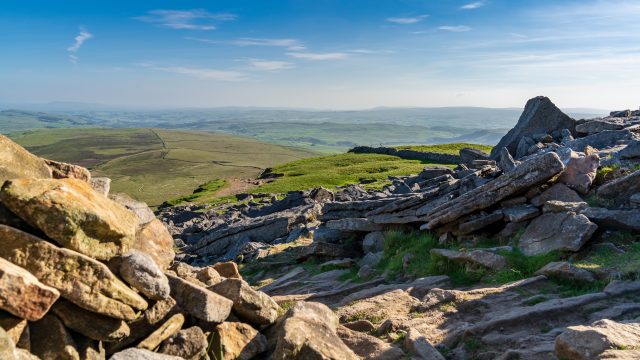This website uses cookies so that we can provide you with the best user experience possible. Cookie information is stored in your browser and performs functions such as recognising you when you return to our website and helping our team to understand which sections of the website you find most interesting and useful.
Is Yorkshire the future of English wine?
Yorkshire is increasing its English wine clout thanks partly to rising temperatures in the North, which are helping the region’s winemakers to thrive.

Amidst the well-documented challenges presented by climate change, there are also opportunities. The resulting warmer weather has opened up a window for English wine producing to move further north, transcending the hub of wineries centred around the Kent and Sussex pockets.
“Generally speaking it has always been much cooler in the North of England, compared with Southern regions like Sussex, which is statistically the sunniest county in the UK,” Sam Linter, chair of WineGB told db this week. “What we’re seeing now is warmer springs starting earlier, and the end of the season stretching right through to the end of October in some cases.”
It’s a change that is undoubtedly benefiting producers looking to make wine in the northern counties, with 16 commercial vineyards now operating in Yorkshire alone.
The drinks business spoke exclusively to Ian Sargent, founder of Laurel Vines Vineyard & Winery in Driffield, East Yorkshire, and chair of the fledging Yorkshire Wine Trail, about the trend.
“Yorkshire and indeed the vineyards in the Midlands and North of England are moving at a considerable pace ,” Sargent told db. “We’ve seen a marked increase in sales from Yorkshire vineyards, often accompanied by remarks of “What? There are vineyards in Yorkshire?”
While Sargent founded Laurel Vines in 2011, he says that a smattering of new Yorkshire vineyards have planted in the last couple of years, which are not yet in production, nodding to a possible boom in the next few years.
“Littlewold Vineyard at South Cave in East Yorkshire, for instance, is in the process of building a new winery, which is likely to be in operation in 2022/23,” says Sargent. “A number of Yorkshire vineyards are also increasing their area under vine, which is being done at a measured rate and so fits with both sales and demand for the wines.”
Sargent, who in June 2021 helped launch the Yorkshire Wine Trail, which links six Yorkshire wineries with the best places to eat and drink in the region, is cautious in terms of forecasting an explosion of Yorkshire wine just yet.
“There are still quite a few points that need to be addressed, such as training and education of both vineyard and winery staff,” he says. “I think we could be talking 10 to 20 years to reach the same scale as our southern producers.”
On the issue of climate change he has this to say: “There has been an increase in temperature during the year, but this has been tempered by more volatility in the climate leading to late frosts, increased rain and humidity when we really do not need it, which leads to increased disease pressure. This year is a clear example. The north largely escaped the May frosts, but this delayed the start of the growing season and whilst the vines rapidly caught up, the cool and damp August slowed ripening down. Currently, we need around three weeks of sunshine to achieve good condition, ripe grapes with good sugar levels.”
Climate change is but one factor in the increase of Yorkshire wineries, with research and development in the region also key. Sargent believes there is more to be done, with greater investment essential.
“Regarding R&D in the region, this is very much a big topic for discussion. I believe there needs to be huge investment in time and monies to ensure this rapidly growing Yorkshire industry is sustainable both environmentally and economically.”

